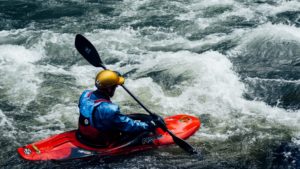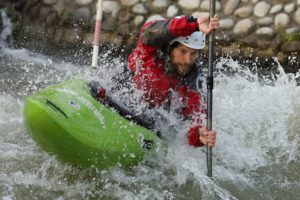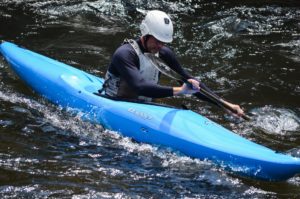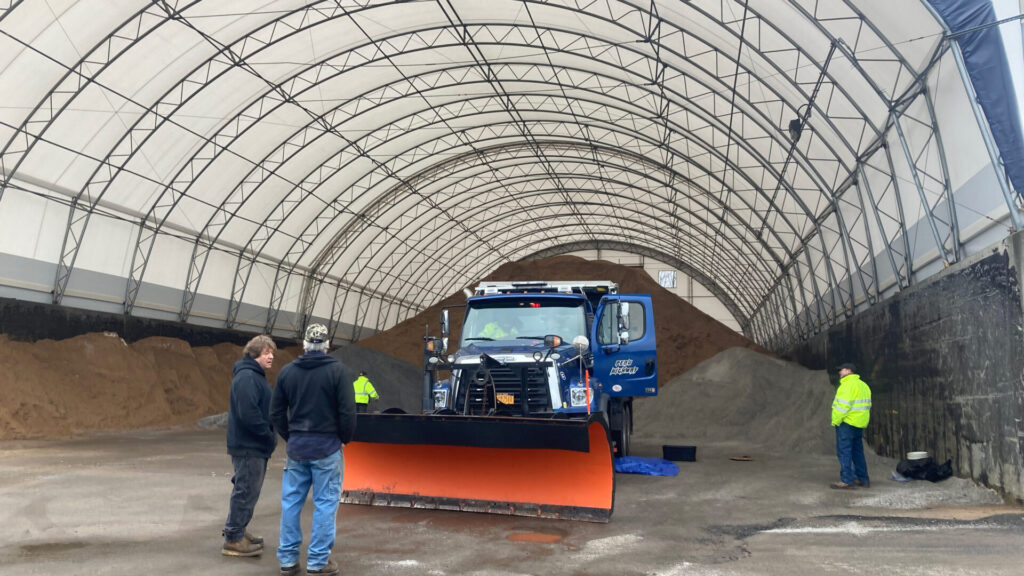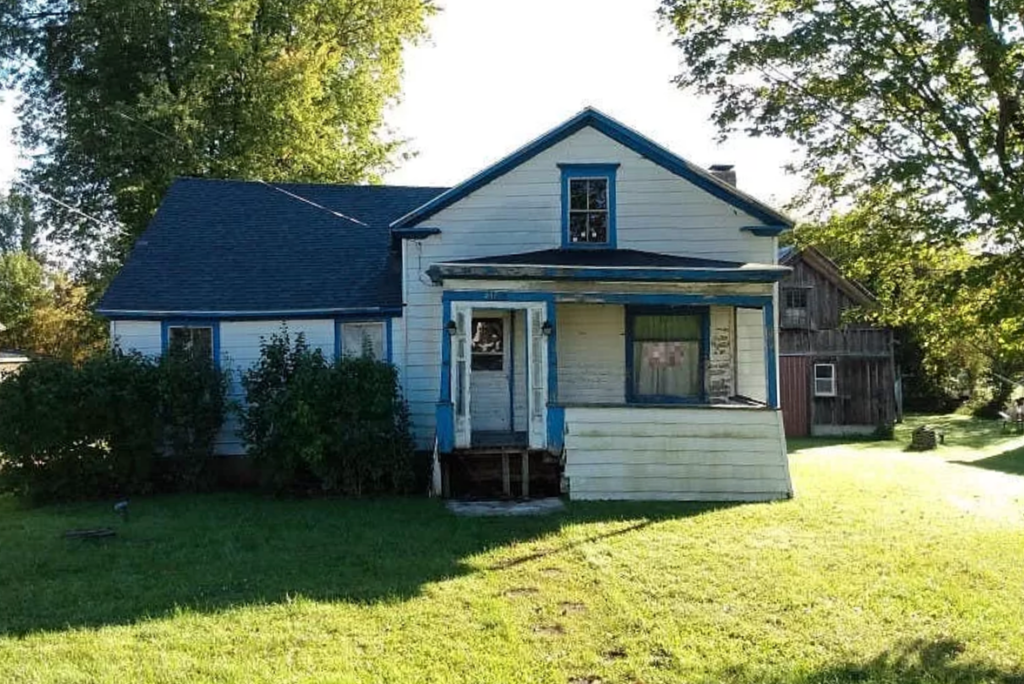A whitewater park is an area on a river in which the flow and gradient have been altered in order to create river “features” that lend themselves to canoeists, kayakers, or even stand up paddleboards being able to do tricks, race, and perform other recreational activities. These features can be holes, waves, or some combination of the two. Holes are created when water flows over a submerged and immobile object, thus causing the water to recirculate and flow back upstream (sometimes referred to as a hydraulic). Waves are similar to holes but have a smooth face of water that rushes up and down their peak, rather than a drop off into a hydraulic. Additionally, waves have less of a recirculating hydraulic flow than holes. Simply imagine the wake of a motor boat in only one location on a river, and you have a wave.
Whitewater parks usually combine both waves and holes to create an interconnected system of features perfect for the adventure seeker. In Saranac Lake we are trying to rebuild a single whitewater feature, most likely a wave. The nice thing about a single feature is that it allows for enjoyment by paddlers, tubers and boogieboarders alike. Similar whitewater parks, surrounded by trails and recreational areas, have not only achieved their original objectives of providing a venue for local water sports enthusiasts, but have often exceeded expectations by becoming focal points for their communities and recreational destinations for outdoor tourism on a regional basis.
